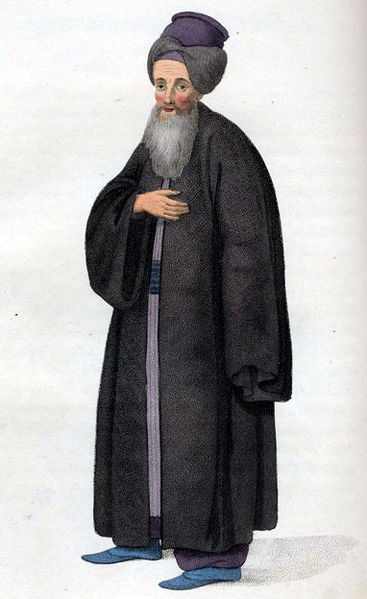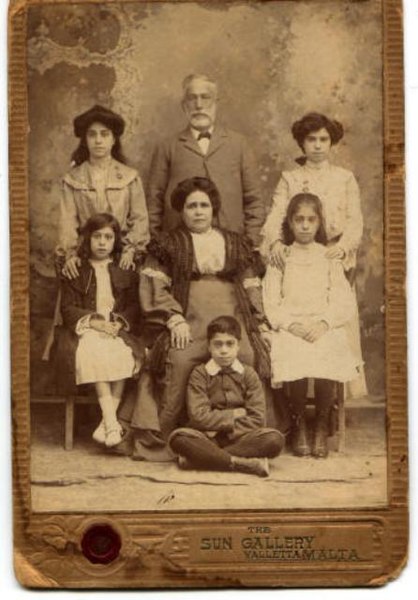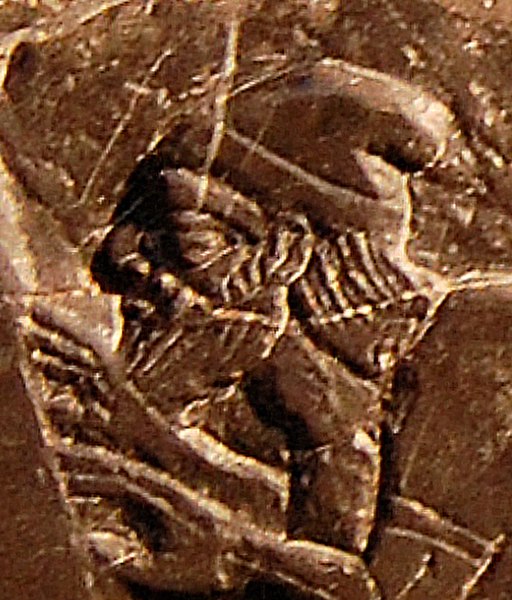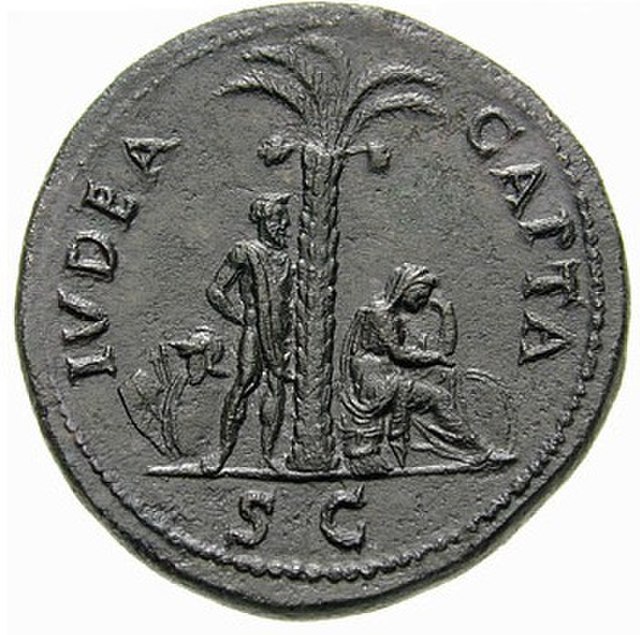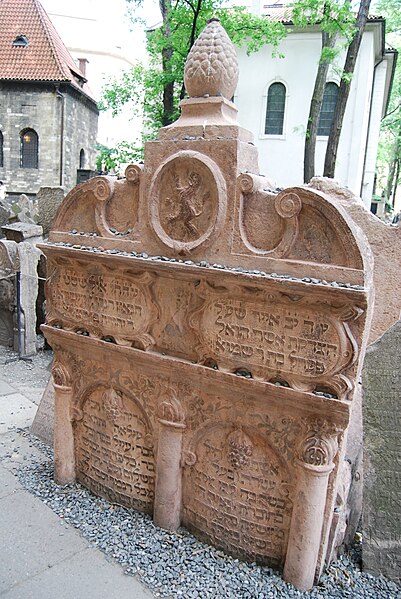Jewish ethnic divisions refer to many distinctive communities within the world's Jewish population. Although considered a self-identifying ethnicity, there are distinct ethnic subdivisions among Jews, most of which are primarily the result of geographic branching from an originating Israelite population, mixing with local communities, and subsequent independent evolutions.
Painting of a Jewish man from the Ottoman Empire, 1779
Jewish women in Algeria, 1851
The Suleiman ben Pinchas Cohen family of Yemen, circa 1944
Maltese Jews in Valletta, 19th century
The Jews or Jewish people are an ethnoreligious group and nation originating from the Israelites of the ancient Near East, and whose traditional religion is Judaism. Jewish ethnicity, religion, and community are highly interrelated, as Judaism is an ethnic religion, although not all ethnic Jews practice it. Despite this, religious Jews regard individuals who have formally converted to Judaism as part of the community.
Depiction of King Jehu, tenth king of the northern Kingdom of Israel, on the Black Obelisk of Shalmaneser III, 841–840 BCE. This is "the only portrayal we have in ancient Near Eastern art of an Israelite or Judaean monarch".
A Roman coin inscribed Ivdaea Capta, or "captive Judea" (71 CE), representing Judea as a seated mourning woman (right), and a Jewish captive with hands tied (left)
Tombstone of the Maharal in the Old Jewish Cemetery, Prague. The tombstones are inscribed in Hebrew.
Bible manuscript in Hebrew, 14th century. Hebrew language and alphabet were the cornerstones of the Jewish national identity in antiquity.

